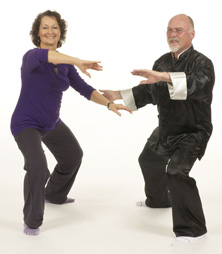There is much discussed in literature about body language but I have come across little about the simple day to day stuff of understanding what is going on or what someone is doing or seeking to communicate just by observing their movements or their touch.
Without an understanding of this communication we are left only with the pedestrian means of linguistic communication where everything has to be brought to consciousness and formed into a verbal exchange – using only the slowest 1/3rd of our communicative ability. Non-verbal communication seems to bridge the conscious/sub-conscious boundary using pattern recognition and touch so that it is very much faster than speech. Often by the time two or more people have explained and understood what is going on verbally the whole exchange could well have been over much more quickly if dealt with non-verbally.
Subtle physical nuance, clumsy linguistic labels.
What is it?
The expression of physical signals and the receiving and interpreting of them both at a distance and by contact.
Examples:
- cook in a kitchen – mechanic in a garage – being courteous, observing their work patterns so as to keep out of their way
- person seeking passageway – excuse me – please let me by – responding to a request for co-operation from hand on arm/shoulder
Spacial awareness
Physical awareness
Social interactions – understanding behaviour without words
70% of communication
Typical gestures:
- slap on the back – well done! Wake up!
- handshake
- hug
Practitioners:
- sports players
- dancers
- martial artists
- lovers
Sensing:
- visually
- by touch
Using the information predictively to ease and speed interactions – but confusions arise where others do not share these patterns e.g. non kinaesthetic people who just don’t get the touch side and so do not “feel” the visual interpretation.
Examples:
- co-operating with someone during a task – keeping out of their way, or not being aware of getting in the way.
- Standing at someone’s desk seeking their attention but being ignored
Cultural differences and experiences:
- UK crowds – the predictive which way are they going left/right pavement “dance”, the touch and apology, the re-active push back or tightening up at a requesting touch. The affronted “who are you pushing?”
- Hong Kong streets – rubbing along together, relaxed and smooth
- “body aware” environments e.g. fetish club – body oriented people moving out of one’s way even before there is a touch or at only a light touch
The developmental question – what are the components? Is this cultural or developmental? – have we tended to lose this ability as we rely more on the printed and spoken word?






